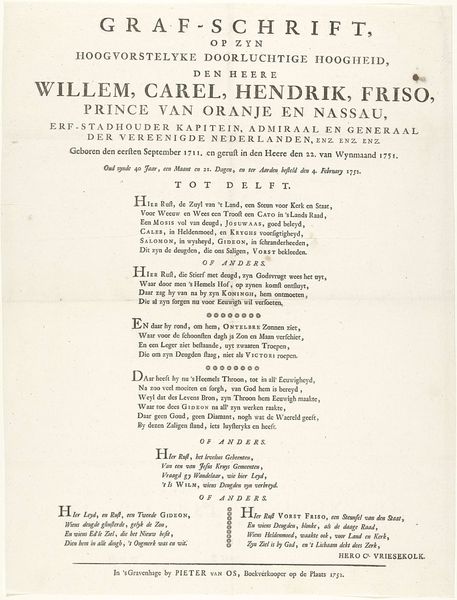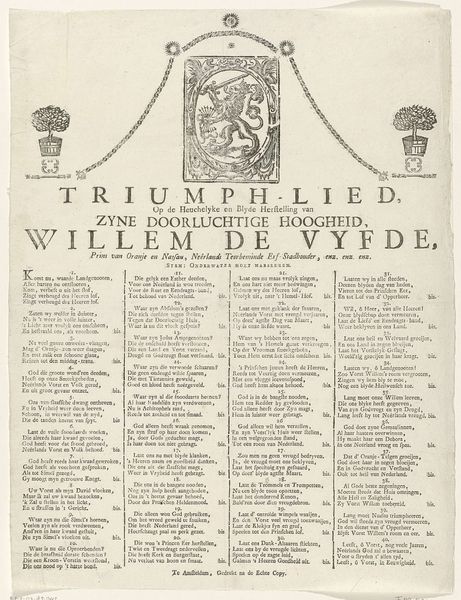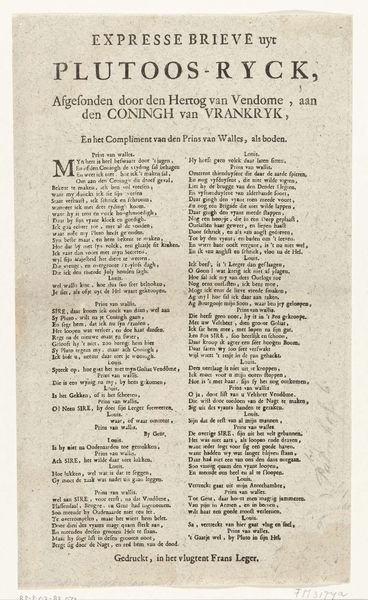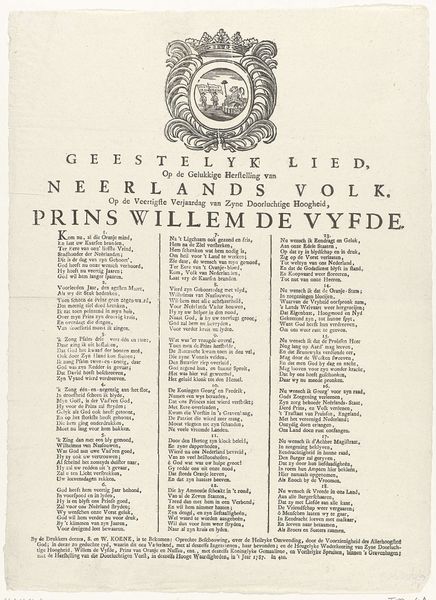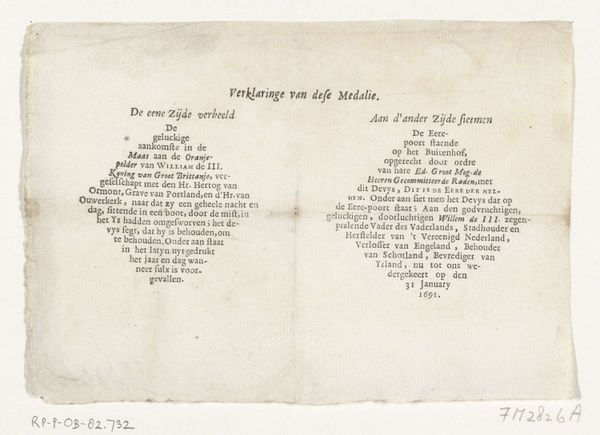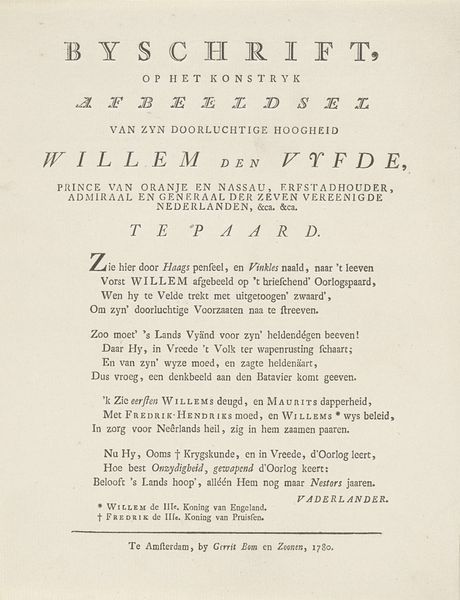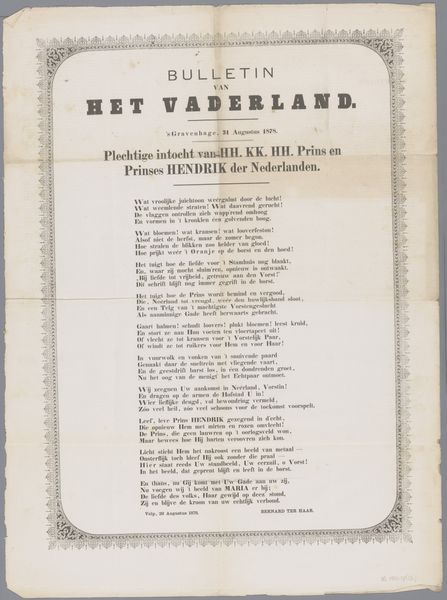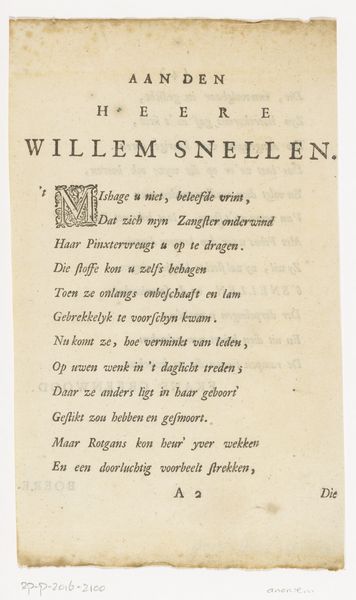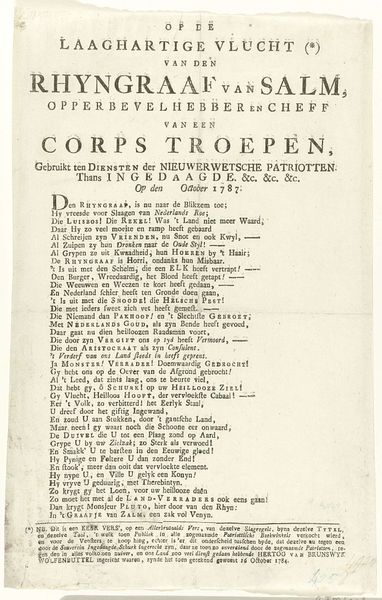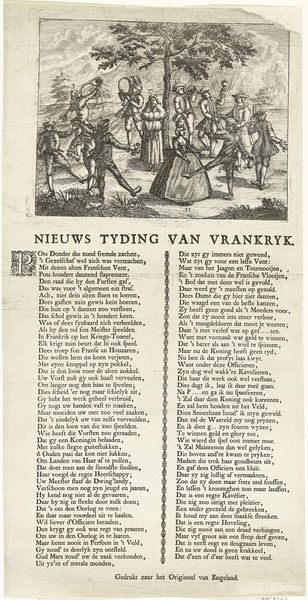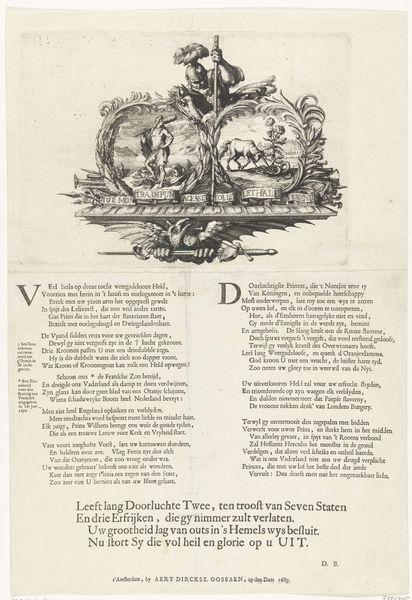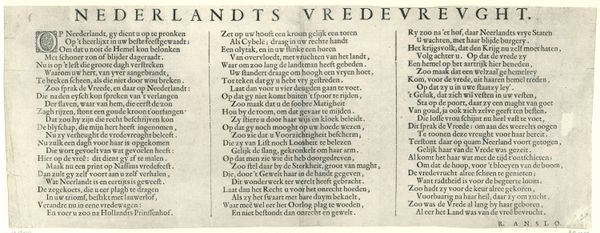
graphic-art, print, textile, typography, poster
#
graphic-art
#
neoclacissism
# print
#
textile
#
typography
#
poster
Dimensions: height 370 mm, width 298 mm
Copyright: Rijks Museum: Open Domain
Curator: Let’s consider this fascinating poster titled "Vers over de Landzaten," which translates to "Verses about the Land Defenders," printed in Rotterdam in 1794 by Abraham Groenendijk. Editor: It's quite text-heavy! My initial reaction is one of restrained anxiety, a feeling amplified by the somewhat claustrophobic layout and the dense typography. Curator: It’s a great point about feeling anxiety. What strikes me is the deliberate effort to stir patriotic fervor and anxieties linked to sociopolitical tensions, which the piece frames around core themes of Fatherland's Love from August 1794, when it was produced. The language invokes images of bravery and sacrifice. I see an urgent call for citizens to defend their homeland. It makes me think of revolutionary sentiments, specifically through resistance. Editor: Precisely. The poem and layout carry strong symbolism. I detect the anchor at the top, representing hope and stability, which descends along both vertical bands with depictions of classical figures and crowned images that suggest wealth or divine order, or at least both held together. This combination certainly illustrates faith and national pride at stake amid sociopolitical turmoil. It's an explicit act of psychological bolstering. Curator: Absolutely. Looking at the repeated references to "Vader Willem" and calls for the Dutch people to arm themselves against foreign threats, particularly "the French," speaks to a deep-seated fear of invasion and cultural disruption and how resistance can come in many forms. Also note, the reference to the Batavians connects contemporary calls for defense to historical resistance against Roman powers in antiquity. These images of brave Batavians evoke a connection to this land’s identity that would otherwise be uprooted, Editor: Those classical underpinnings were definitely a prevalent visual code and motif with loaded references for viewers to easily connect the moment's urgency to larger historical currents and moral considerations. This intertextuality invites its intended readers into broader interpretive contexts for meaning-making that amplifies emotions while rationalizing the cause to fight in God’s name. Curator: This poster, then, reveals much about the social and political climate of the Netherlands at the time. The question for viewers might be what visual and textual tools are used and which may fall out of use to rally and define identity. Editor: And I'd argue it provides a reminder that symbols have psychological potency tied to shifting societal fears, prejudices, and ambitions that evolve and need examination over time.
Comments
No comments
Be the first to comment and join the conversation on the ultimate creative platform.

